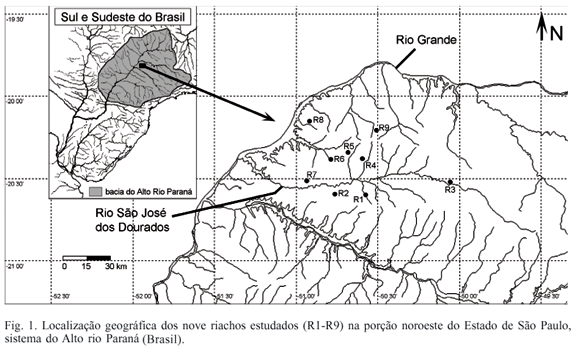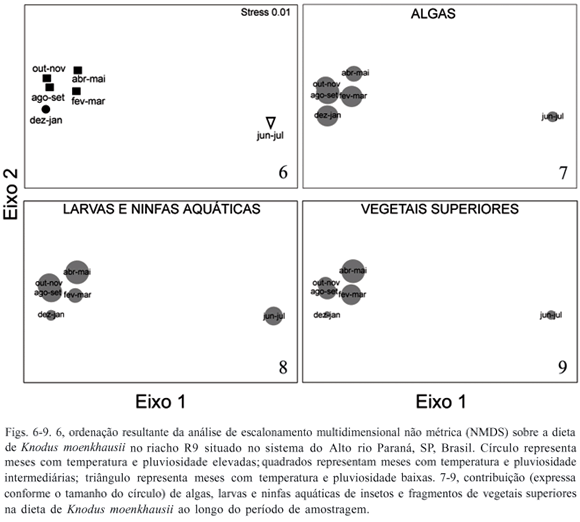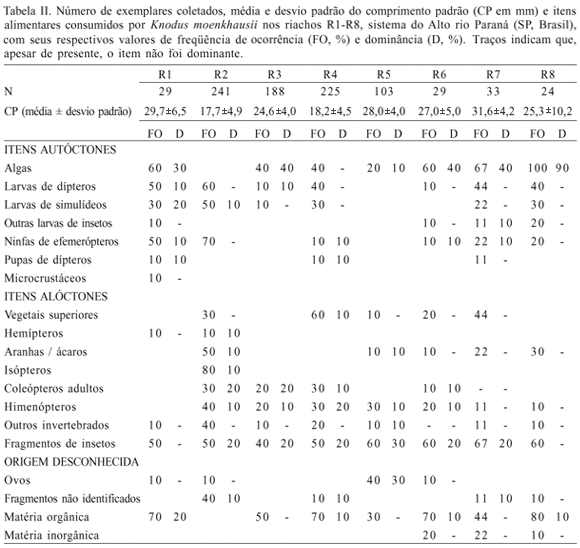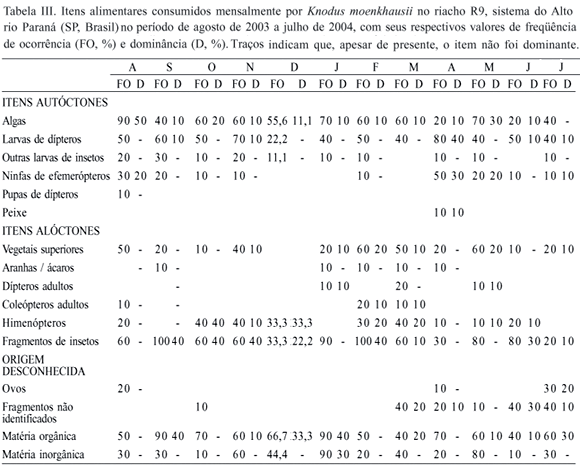In the present investigation we studied the feeding biology of Knodus moenkhausii (Eigenmann & Kennedy, 1903) in streams of the Upper Paraná river system in the state of São Paulo. In eight streams (R1-R8), K. moenkhausii consumed 18 items, of which algae, ephemeropteran nymphs, and dipteran larvae were the most frequent and dominant autochthonous items, as were terrestrial insects, hymenopterans, and spiders regarding allochthonous items. In the R2 stream, K. moenkhausii showed distinct diet, mostly due to depth, substrate type, and presence of riparian vegetation. In the R9 stream (monthly sampled for one year), 15 items were consumed, of which terrestrial insects predominated all year round; dipteran larvae and algae were least relevant during December-January (hot and wet period) and June-July (cold and dry period), respectively. During snorkeling observations in this stream, we recorded individuals performing drift feeding, picking at relatively small preys close to the substrate and submerged vegetation, and surface picking. The large diversity of consumed items - conditioned to habitat and seasonal variations - and the diversity of feeding tactics allow us to consider K. moenkhausii a rather opportunistic fish species. Such opportunism apparently reflects on the species abundance, showing its ability to allocate a significant part of its energy to reproduction, even in physically impacted habitats by human actions.
Nektonics; omnivory; feeding tactics; seasonality







